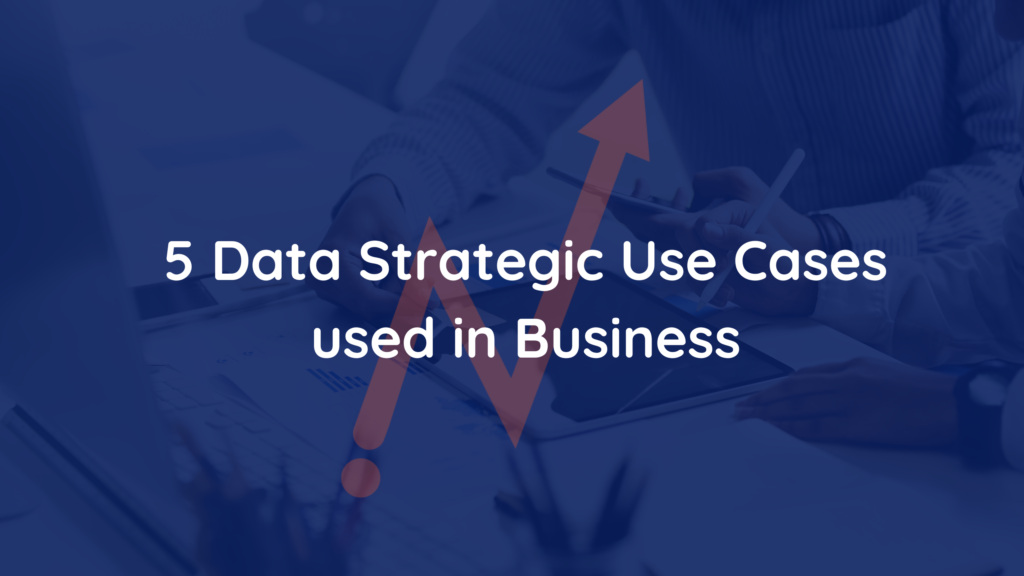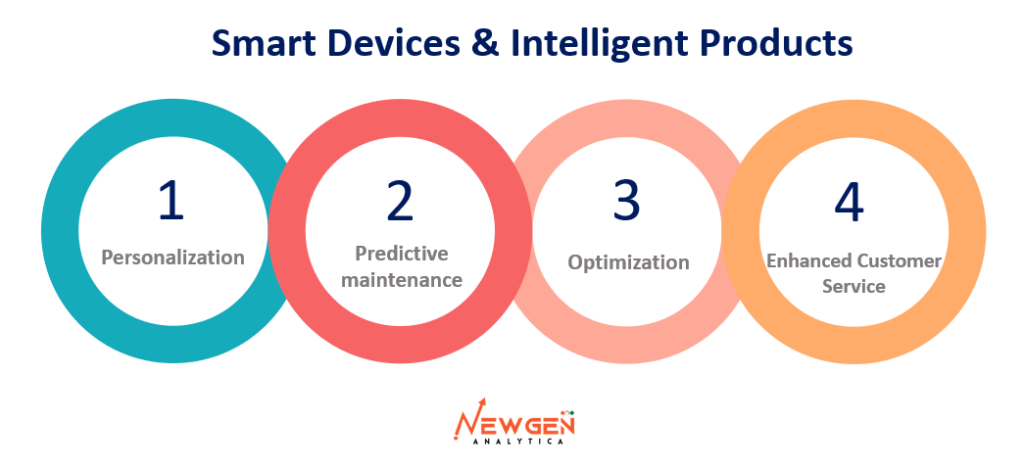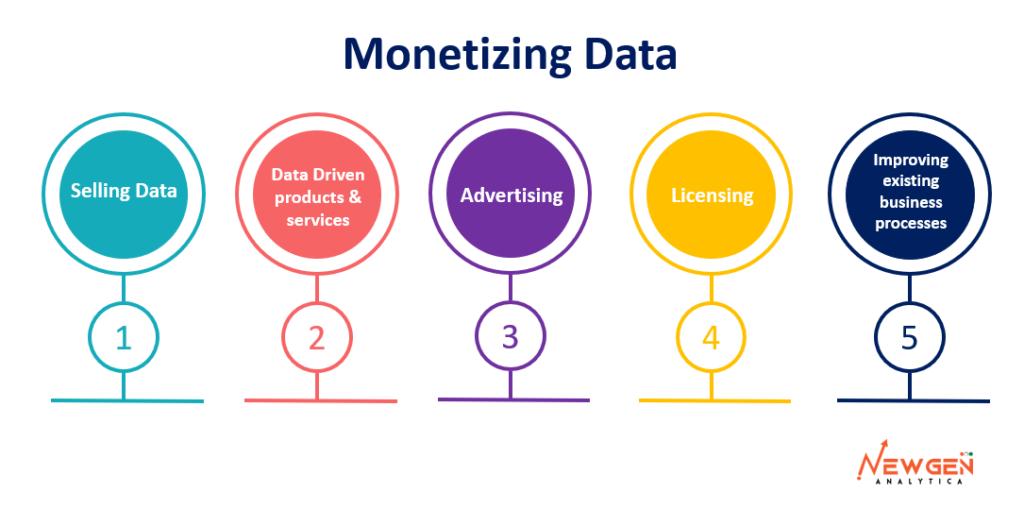
5 Data Use Cases to improve your Business Strategy
As we have heard that
“Data is new fuel, to run a business”.
I hope you agree with it. Although all data is important somehow that does not necessarily mean that we need all the data available to improve businesses. In order for data to be valuable to your business. It should help you with the following points
- Address certain business needs
- Solve biggest problem of a business.
- Achieveing your strategic goals.
To be able to determine a good strategy, you first need to understand your business objectives. So here are some usecases through which data can be used in industry.

Data Driven Decisions through data
Using data to make better informed, fact-based decisions refers to the process of collecting, analyzing, and interpreting data to inform business decisions. The goal is to make decisions that are based on data and facts, rather than intuition, assumptions, or guesses.
By collecting and analyzing data, organizations can gain insights into customer behavior, market trends, operational efficiency, and other factors that are relevant to their business. This information can then be used to inform decisions about product development, marketing strategies, customer service, and other areas of the business.
For example, data analysis can help a company understand which products are selling well and which are not, which marketing channels are most effective, and which customer segments are most valuable. This information can then be used to make informed decisions about which products to focus on, where to allocate marketing resources, and how to best serve customers.
In addition to increasing the accuracy of decisions, using data to make better informed, fact-based decisions can also help organizations make decisions more quickly and efficiently. Rather than relying on intuition or assumptions, decision-makers can use data to identify trends, patterns, and other important insights that can inform their decisions.
Better Understanding of correct market and customers
Data helps in understanding markets and customers by providing insights into their behavior, preferences, and patterns. This information can be gathered through various methods such as surveys, customer interactions, and digital tracking. By analyzing data, companies can identify trends, predict customer needs, and make informed decisions about product development, marketing, and sales strategies.
Additionally, data can also help companies measure the success of their initiatives and make improvements where necessary. In short, data provides a comprehensive view of markets and customers that is essential for making informed business decisions.
In business, data plays a crucial role in understanding markets and customers by providing valuable insights into their behavior, preferences, and patterns. This information is critical for making informed decisions that can lead to better customer experiences, increased customer loyalty, and overall business success.
Here are some ways in which data can help you understand your markets and customers:

Identifying customer needs and preferences: Data collected through customer interactions, surveys, and digital tracking can provide information on what customers want, need, and value in a product or service. This information can be used to develop products and services that meet customers’ needs and improve their overall experience.
Segmentation and targeting: Data analysis can help companies segment their customers based on various characteristics, such as demographics, behavior, and purchase history. This information can then be used to target specific customer groups with tailored messages and offers.
Measuring customer satisfaction: Data collected through customer feedback mechanisms, such as surveys and online reviews, can provide insights into how customers perceive a company’s products and services. This information can help companies identify areas for improvement and measure the success of their customer satisfaction initiatives.
Tracking customer behavior: Digital tracking tools, such as website analytics and mobile app analytics, can provide data on how customers interact with a company’s products and services. This information can be used to optimize the customer journey and improve overall customer experience.
Predictive analysis: Predictive analytics uses historical data and machine learning algorithms to identify patterns and make predictions about future customer behavior. This information can help companies anticipate customer needs and make informed decisions about product development, marketing, and sales strategies.
Data helps companies understand their markets and customers by providing a comprehensive view of their behavior, preferences, and patterns. This information is essential for making informed business decisions that can lead to better customer experiences and increased business success.
Smart Devices and Intelligent Products
Data can be used to offer smarter services and intelligent products by providing insights into customer behavior and preferences. This information can then be used to develop products and services that are more tailored to customer needs and improve their overall experience.
Here are some ways in which data can be used to offer smarter services and intelligent products:

Personalization: Data analysis can provide insights into individual customer preferences, allowing companies to personalize their products and services to meet the specific needs of each customer. This can result in a more satisfying customer experience and increased customer loyalty.
Predictive maintenance: Data from IoT devices and sensors can be used to predict when equipment will fail, allowing companies to schedule maintenance before a problem occurs. This can improve equipment reliability and reduce downtime.
Optimization: Data analysis can be used to optimize the performance of products and services, leading to improvements in efficiency, cost-effectiveness, and customer satisfaction.
Enhanced customer service: Data collected through customer interactions and feedback mechanisms can be used to identify common customer issues and improve the quality of customer service. Additionally, data can also be used to develop self-service options, such as online chatbots and knowledge bases, that can improve the customer experience.
Data plays a crucial role in offering smarter services and intelligent products. By providing insights into customer behavior and preferences, data can be used to develop products and services that are more tailored to customer needs and improve their overall experience.
Improving & Automating Business Processes
Data is used to improve and automate business processes by providing valuable insights into process efficiency and effectiveness. This information can then be used to identify areas for improvement and implement changes that can increase efficiency, reduce errors, and improve the overall customer experience.
Here are some ways in which data can be used to improve and automate business processes:

Process mapping: Data analysis can be used to map out business processes and identify bottlenecks, inefficiencies, and areas for improvement. This information can then be used to redesign processes for increased efficiency.
Workflow automation: Data can be used to automate repetitive tasks and reduce the risk of errors. This can lead to improved efficiency and reduced costs, allowing companies to allocate more resources to higher-value tasks.
Monitoring and tracking: Data collected through process monitoring and tracking tools can provide insights into process performance, allowing companies to identify areas for improvement and measure the success of their process improvement initiatives.
Process optimization: Data analysis can be used to optimize processes by identifying bottlenecks, inefficiencies, and areas for improvement. This information can then be used to make informed decisions about process redesign and improvement.
Predictive analytics: Predictive analytics uses historical data and machine learning algorithms to identify patterns and make predictions about future process outcomes. This information can be used to identify potential process failures before they occur, allowing companies to proactively address issues and reduce downtime.
We can say that over here data plays a important role in improving and automating business processes. By providing valuable insights into process efficiency and effectiveness, data can be used to identify areas for improvement and implement changes that can increase efficiency, reduce errors, and improve the overall customer experience.
Monetizing Data
Data monetization refers to the process of converting data into a revenue-generating asset. This involves collecting and analyzing data, and then using the insights gained from that analysis to create new revenue streams or improve existing ones.
Companies can monetize their data in several ways, including:

Selling data: Companies can sell their data to third-party organizations, such as market research firms, data brokers, and other businesses, who can then use it for their own purposes.
Data-driven products and services: Companies can use their data to create new products and services, such as personalized recommendations, targeted advertising, and predictive analytics, that can be sold to customers.
Advertising: Companies can use their data to improve the targeting and relevance of their advertising, leading to higher engagement and conversion rates, and increased revenue.
Licensing: Companies can license their data to other organizations, who can then use it to develop their own products and services.
Improving existing business processes: Companies can use their data to improve their existing business processes, such as supply chain management, customer service, and product development, leading to increased efficiency and cost savings.
Data monetization involves converting data into a valuable asset that can be used to create new revenue streams or improve existing ones. Companies can monetize their data in several ways, including selling data, creating data-driven products and services, using data for advertising, licensing data, and improving existing business processes.
Conclusion & Summary
In conclusion, data plays a crucial role in modern business. It can be used in several strategic ways to drive business success and improve customer experience. These five data use cases include:
Understanding markets and customers: By analyzing customer behavior and preferences, data can provide valuable insights into customer needs and preferences, allowing companies to tailor their products and services to meet customer needs.
Offering smarter services and intelligent products: Data analysis can provide insights into customer behavior and preferences, allowing companies to personalize their products and services and improve the overall customer experience.
Improving and automating business processes: Data can be used to improve and automate business processes by providing valuable insights into process efficiency and effectiveness. This information can then be used to identify areas for improvement and implement changes that can increase efficiency and reduce errors.
Data monetization: Data monetization involves converting data into a valuable asset that can be used to create new revenue streams or improve existing ones. Companies can monetize their data in several ways, including selling data, creating data-driven products and services, using data for advertising, licensing data, and improving existing business processes.
Making informed decisions: Data analysis can provide insights into customer behavior, market trends, and other factors that impact business success. This information can then be used to make informed decisions about product development, marketing, and sales strategies.
In conclusion, data is a valuable asset that can be leveraged in several strategic ways to drive business success and improve the customer experience. Companies that effectively harness the power of data are more likely to achieve their business goals and remain competitive in today’s fast-paced business environment.
I hope you liked this article. In the next article we will see how data can be useful to improve your decisions in effective manner.
Stay tuned! Happy Learning!